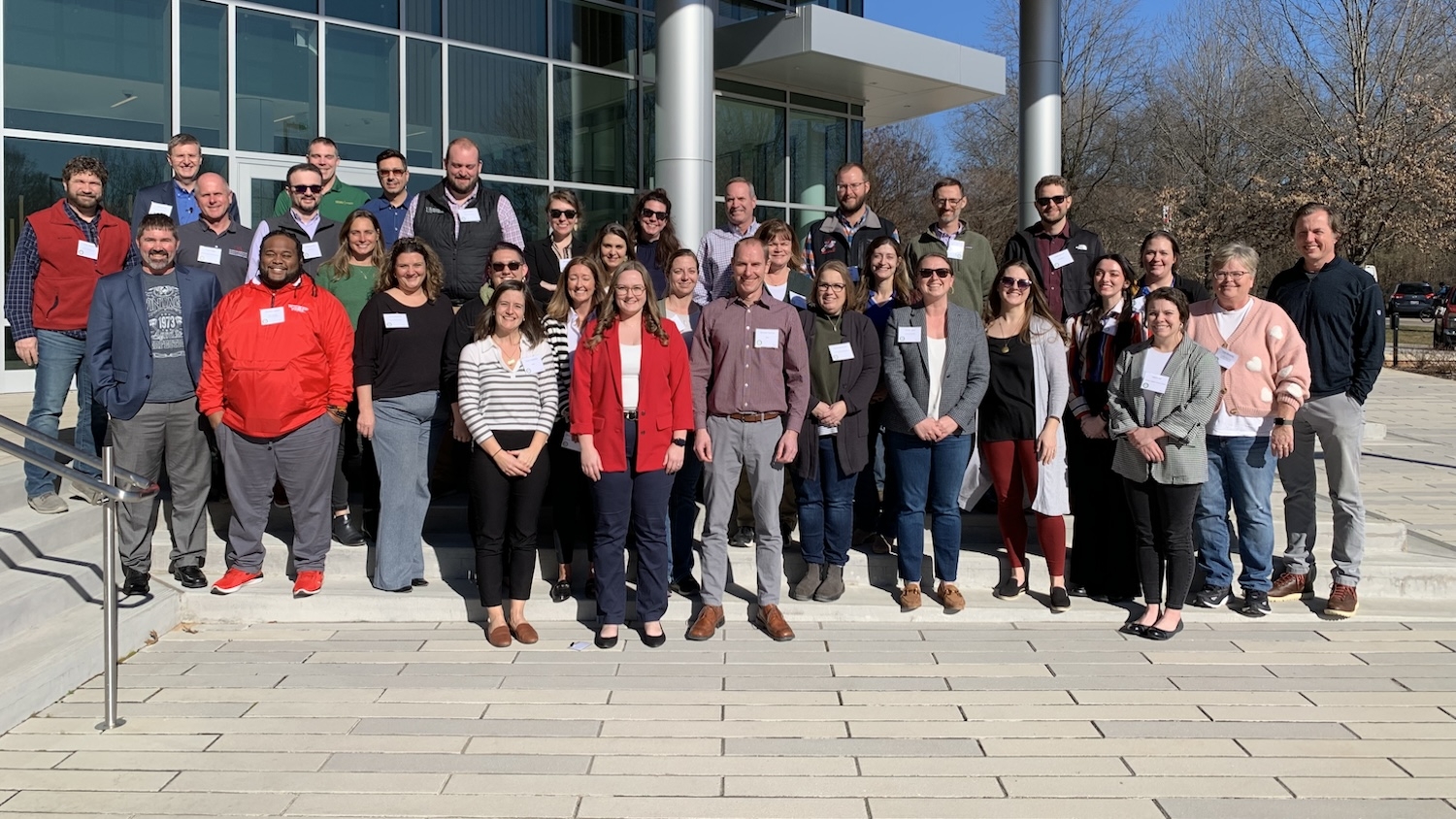
Collaboration and coordination were key themes of a recent meeting that brought together Extension faculty members from land-grant universities across the United States with representatives of state and national soybean checkoff organizations.
The aim of the meeting, held Feb. 6-8 at NC State University’s Plant Sciences Building, was to begin developing a road map to amplify educational outreach efforts benefitting U.S. soybean farmers, who make the nation the second leading soybean producer in the world.
Extension soybean agronomists, entomologists, plant pathologists, weed scientists and nematologists, plus communicators and leaders of checkoff organizations, took part in the meeting, dubbed “Better Together.” The five collaborative soybean outreach groups represented were the Crop Protection Network, the Science for Success Initiative, GROW, Take Action and the Soybean Cyst Nematode Coalition.
Ray Starling, general counsel at the NC Chamber and an executive adviser with Aimpoint Research. Invited speakers Jennifer Coleman, director of communications for Aimpoint, and Ben West, founder of Risora Consulting, challenged participants to think of the farmer of the future as they deliver information and evaluate their communication efforts. Ongoing outreach efforts, they said, will need to use innovative information delivery systems to meet ever-evolving needs of their farmer audiences.
Setting the stage for “Better Together” were Katherine Drake Stowe, director of the U.S. Soybean Research Collaborative, and Rachel Vann, a platform director of the North Carolina Plant Sciences Initiative and Extension soybean specialist with NC State University’s Department of Crop and Soil Sciences.
Vann called the meeting a historic opportunity to forge collaborations and coordination across disciplines, universities and other soybean-related organizations to achieve the best return on the investment that soybean farmers make in research-based outreach efforts funded through the national and state soybean checkoff programs.
Such coordination and amplification of research-based information and agricultural innovation will be key, Vann said, to ensuring that farmers continue to have access to the trustworthy, high quality, and impactful information they need to sustain their operations.
Coordinated efforts could be particularly important, given rapid changes in the communications landscape. As some participants pointed out, today’s farmers have near instantaneous access to more information, but not all of it is research-based.Stowe says she was excited by the participants energy and sincere desire to “innovate communication strategies to better deliver for the U.S. soybean farmer.”
“Because of this initiative, we will be able to streamline information delivery, leverage individual resources and ultimately maximize the return on investment for soybean farmers,” Stowe adds. “The event is the first step in these diverse groups working together and demonstrates the power of collaboration in driving forward relevant and unbiased information for soybean growers.”
Vann said the groups taking part in the Better Together initiative plan to continue to coordinate efforts and to build synergy around their resources as they execute the strategic roadmap developed at the meeting.
This post was originally published in Plant Sciences Initiative.